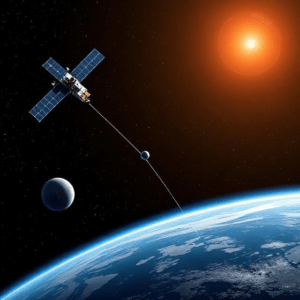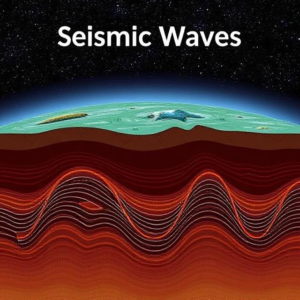What is Satellite Communication?
Satellite communication involves sending signals between a satellite in space and a device on Earth (like a phone, TV, or computer). Satellites act as relays to help transmit signals over long distances, making things like phone calls, TV broadcasts, and the internet possible.
1. Active Satellites
- What they are: Active satellites are like “communication hubs” in space. They not only receive signals from Earth but also amplify (strengthen) the signals and then send them back to Earth.
- How they work:
- These satellites receive signals from a ground station or another satellite.
- Then, they amplify the signal to make it stronger (because the signal weakens as it travels).
- After amplification, the satellite retransmits the signal to Earth or to another satellite.
- Examples:
- Communication Satellites (like those used for phone calls, TV broadcasting, or internet services) are usually active. They allow people to communicate from different places on Earth by bouncing signals back and forth.
- Weather Satellites can send back images or data to Earth for weather forecasting.
- Advantages:
- Active satellites can cover a large area of Earth.
- They can handle a lot of different types of communication (TV, internet, phone).
- They can help improve signal quality with amplification.
- Example in real life: Think of an Iridium Satellite system, which provides global phone coverage through active communication satellites. The satellite boosts the signal and sends it back to Earth to the phone you’re using.

2. Passive Satellites
- What they are: Passive satellites don’t amplify or change the signals they receive. They simply reflect signals from one place to another. They’re more like mirrors in space.
- How they work:
- A passive satellite receives a signal from Earth (like from a ground station).
- It reflects that signal back toward another point on Earth (or another satellite) without modifying the signal. It’s like a “signal mirror” in space.
- These satellites don’t have onboard power to amplify the signal or change it in any way.
- Examples:
- Some Relay Satellites in older systems.
- Some military communication satellites or older communications satellites used for specific purposes.
- Advantages:
- Passive satellites are simpler and cheaper to build because they don’t need complex electronics to amplify or modify the signal.
- They can reflect signals over very long distances without needing to do much processing.
- Example in real life: A solar-powered passive satellite can simply reflect the radio signals sent from one point on Earth to another. It doesn’t modify the signal but acts as a relay.
Key Differences Between Active and Passive Satellites:
| Feature | Active Satellites | Passive Satellites |
|---|---|---|
| Function | Amplify and retransmit signals | Reflect signals without modification |
| Power Source | Require power to amplify signals | Don’t require power for signal reflection |
| Complexity | More complex (due to amplification) | Simpler design |
| Use | Communication (TV, phone, internet) | Limited to signal reflection |
| Cost | More expensive (due to active components) | Cheaper (simple reflectors) |
| Signal Quality | Can improve signal quality with amplification | Signal quality may degrade without amplification |
Summary:
- Active satellites amplify and retransmit signals, making them useful for things like TV broadcasts, phone calls, and internet access. They are more complex and expensive but allow for clear, strong communication over long distances.
- Passive satellites simply reflect signals from one point to another, without modifying or amplifying them. They are cheaper and simpler but aren’t as effective in handling large-scale communication systems.











